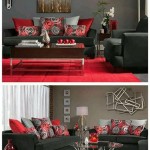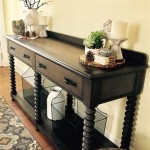How to Decorate a Holiday Homework Page
Holiday homework, often assigned to students during school breaks, serves as a reinforcement of learned concepts and a bridge to the upcoming academic term. While the focus remains on completing the assignments accurately and comprehensively, the presentation of the work can significantly impact its overall appeal and demonstrate a student's commitment to quality. Decorating the holiday homework page, therefore, becomes an opportunity to enhance its visual appeal and create a positive impression.
The act of decorating extends beyond mere aesthetics; it encourages creativity, improves fine motor skills (especially for younger students), and fosters a sense of ownership over the completed work. A well-decorated page can also make the homework more engaging, motivating the student to approach the task with greater enthusiasm. However, it's crucial to strike a balance between creativity and neatness, ensuring the decorations complement the content rather than overshadowing it.
The approach to decoration will vary depending on several factors, including the age of the student, the nature of the holiday, and the specific requirements set by the teacher. Younger students might benefit from using simpler techniques, while older students can explore more sophisticated designs. Regardless of the chosen method, adherence to school guidelines and a focus on clarity are paramount.
Selecting Appropriate Themes and Materials
The first step in decorating a holiday homework page is identifying a suitable theme. The theme should ideally be relevant to the holiday during which the homework is assigned. For example, homework assigned during the Christmas break could incorporate elements like snowflakes, Christmas trees, or festive colors like red and green. Similarly, homework assigned during Thanksgiving could feature images of turkeys, cornucopias, or autumn leaves. It is important to ensure that the chosen theme is age-appropriate and aligns with the school's policies regarding holiday decorations.
The selection of materials is equally crucial. Popular choices include colored pencils, crayons, markers, glitter, stickers, and construction paper. Each material offers unique advantages and disadvantages. Colored pencils allow for precise shading and detail, while crayons are easy to use and suitable for younger students. Markers provide vibrant colors but can bleed through thin paper. Glitter adds a touch of sparkle but requires careful application to avoid mess. Stickers offer a quick and easy way to add decorative elements, while construction paper can be used for creating borders or cut-out shapes.
When choosing materials, it is essential to consider the type of paper used for the homework. Thin paper is more susceptible to bleeding and tearing, so lighter mediums like colored pencils or crayons are generally preferable. Thicker paper can accommodate markers and even some types of paint, providing greater flexibility in design options. Furthermore, it is advisable to test the materials on a separate sheet of paper before applying them to the actual homework page to ensure they produce the desired effect and do not damage the paper.
Safety is also a key consideration when selecting materials. Non-toxic, child-safe options should always be prioritized, particularly when working with younger children. Supervision is recommended to prevent accidental ingestion or misuse of materials like glue or glitter. Additionally, it is important to ensure that the decorations do not obscure the content of the homework or make it difficult to read. The primary focus should always remain on the academic work itself, with the decorations serving as a subtle enhancement.
Techniques for Effective Decoration
Once the theme and materials have been chosen, the next step is to implement the decoration. Several techniques can be employed to create visually appealing and effective designs. Borders are a common and simple way to frame the homework page. These can be created using colored pencils, markers, or construction paper. A simple line border can be enhanced by adding patterns, such as dots, stripes, or zigzags. For a more festive look, the border can be decorated with тематические images, such as snowflakes or stars.
Illustrations or drawings can be incorporated to add visual interest and complement the content of the homework. These can range from simple sketches to more elaborate designs, depending on the student's artistic skill and the time available. Relevant images, such as historical figures for a history assignment or scientific diagrams for a science assignment, can be used to reinforce the learning material. Alternatively, decorative elements like festive scenes or abstract patterns can be added to enhance the overall aesthetic appeal.
Color plays a significant role in creating an appealing design. The use of color can draw attention to specific areas of the homework page and create a sense of visual harmony. A limited color palette is generally recommended to avoid overwhelming the viewer. Colors should be chosen that complement each other and align with the chosen theme. For example, warm colors like red, orange, and yellow can be used to create a sense of energy and excitement, while cool colors like blue, green, and purple can evoke feelings of calm and tranquility. The strategic use of color can significantly enhance the overall impact of the decoration.
Calligraphy or decorative lettering can be used to enhance the title or headings of the homework page. This can add a touch of elegance and sophistication to the presentation. Different fonts and styles can be experimented with to create a unique and personalized look. However, it is important to ensure that the lettering is legible and does not detract from the clarity of the content. A consistent style should be maintained throughout the page to create a cohesive and professional appearance. Practice on a separate sheet of paper is recommended before applying calligraphy to the actual homework page.
Stickers and pre-cut shapes offer a convenient way to add decorative elements to the homework page. These can be used to create borders, add accents, or reinforce the thematic elements of the design. Stickers are available in a wide variety of designs and sizes, making it easy to find options that suit the specific requirements of the homework. Pre-cut shapes, such as stars, hearts, or snowflakes, can be easily attached to the page using glue or tape. When using stickers or pre-cut shapes, it is important to avoid overcrowding the page and to ensure that they are strategically placed to enhance the overall composition.
Maintaining Neatness and Clarity
While decoration is encouraged, it is crucial to maintain neatness and clarity in the presentation of the homework. The primary purpose of the homework is to demonstrate understanding of the subject matter, and the decorations should not detract from this goal. Overly elaborate or cluttered designs can make the homework difficult to read and can even be distracting. A clean and organized presentation is essential for ensuring that the content is easily accessible and understandable.
Avoid using excessive amounts of glitter or other materials that can create a mess. Glitter can easily spread and smudge, making the homework look untidy. Similarly, avoid using excessive amounts of glue, which can wrinkle or damage the paper. When using markers or pens, ensure that the ink does not bleed through the paper, making the text difficult to read. A well-decorated homework page should be visually appealing but also easy to read and understand.
Ensure that the decorations do not obscure any of the text or diagrams in the homework. All content should be clearly visible and easy to distinguish from the decorations. Avoid placing decorations directly over important information or using colors that make the text difficult to read. The decorations should complement the homework, not compete with it. A balanced and harmonious presentation is key to creating a positive impression.
Proofread the homework carefully for any errors in spelling or grammar. Even the most beautifully decorated homework page will be undermined if it contains careless mistakes. Before submitting the homework, take the time to review the content and correct any errors. A well-presented and error-free homework page demonstrates a commitment to quality and attention to detail.
Adherence to the specific instructions provided by the teacher is also essential. Some teachers may have specific guidelines regarding the use of decorations or the overall presentation of the homework. Failure to follow these instructions could result in a lower grade. Before beginning the decoration process, carefully review the teacher's instructions and ensure that all requirements are met. A thoughtful and compliant approach to the homework will demonstrate respect for the teacher's expectations and a commitment to academic success.

Holiday Homework Design Border

Border Designs On Paper Holiday Homework Front Page Design

Summer Holiday Project Homework Design Front Page Border ब र डर

Ribbon Draw Border Design On Paper

Holiday Homework Front Page Design Decoration

Project File Cover Page Peacock Design Practical Khata Front Tarun Art Book Flower Drawing Paper

Holiday Homework Design English Front Page

Holiday Homework Border Design

Cover Page Idea Holiday Homework Pages

Maths Holiday Homework Front Page Design







